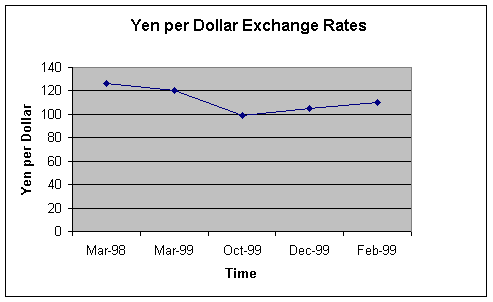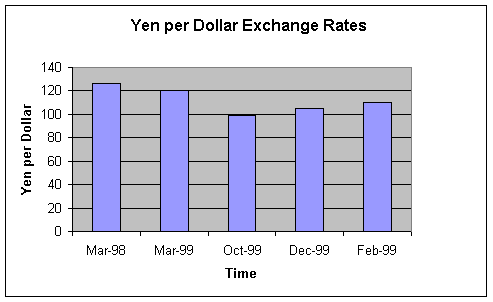
Grades 9-12
Happy EconEdMonth! Celebrate economics all month long by visiting EconEdMonth.org

Don't have an account yet? Sign up for free
Don't have an account yet? Sign up for free

Carlos is a senior at local high school. When he graduates, he plans to study computer animation. He has applied to a number of two- year programs, and recently, he received letters of acceptance from four schools, one in the United States and three abroad. Carlos has funding from several sources, providing him with a $5,000 scholarship to be used at the school of his choice, a student loan of $5,000, and $6,000 of personal savings. Your job is to evaluate the options that will allow Carlos to complete a 2-year computer animation program, given the $16,000 of funding. The real issue for Carlos to consider is what he can afford. Listed below are the four schools to which Carlos has been accepted, including the package of options and expenses for each.
Carlos is a senior at local high school. When he graduates, he plans to study computer animation. He has applied to a number of two-year programs, and recently, he received letters of acceptance from four schools, one in the United States and three abroad. Carlos has funding from several sources, providing him with a $5,000 scholarship to be used at the school of his choice, a student loan of $5,000, and $6,000 of personal savings.
Your job is to evaluate the options that will allow Carlos to complete a 2-year computer animation program, given the $16,000 of funding. The real issue for Carlos to consider is what he can afford. Listed below are the four schools to which Carlos has been accepted, including the package of options and expenses for each.
Cost per year to complete a two-year program in computer animation
The Tokyo Technical Institute
Tuition: 750,000 yen
Room & Board: 250,000 yen
TTI scholarship: 129,000 yen
The London School of Technology
Tuition: 3,600 pounds
Room & Board: 1200 pounds
LFS scholarship: 600 pounds
The University of Helsinki
Tuition: 29,810 markka
Room & Board: 12,466 markka
UH scholarship: 10,840 markka
University of California at Los Angeles
Tuition: 5,000 dollars
Room & Board: 4,000 dollars
UCLA scholarship: 3,000 dollars
Activity 1
Exchange Rates
Whoa! What is a yen, a markka, and a pound? In the United States our currency is the dollar; in Japan, the United Kingdom, and Finland, the currencies are the yen, the pound, and the markka. So, what exactly is currency? People use currency, in the form of coins and bills, as payment for goods and services. What forms do United States currency take? [$1, $5, $10, $20, $50, $100 for the bills and the penny; nickel, dime, quarter, half-dollar, and $1 dollar for the coins] Each individual country has its own currency that is accepted as payment for goods and services. Is it possible that all currencies are worth the same amount? Tuition in Tokyo is 580,500 yen, in London it is 3,000 pounds, and in Helsinki, it is 29,810 markka. These amounts clearly differ from the $5,000 cost of tuition at UCLA. Carlos must figure out a way to compare the tuition prices listed at each school in order to make a decision.
Fortunately, there is a system in place that allows the currency of one country to be exchanged for the currency of another. This system is the currency exchange market and it provides the prices of one currency in terms of another. For example, let's price the currencies of Japan, the United Kingdom, and Finland in terms of how much of each a single dollar will buy.
| $1 = | 129 | . | 0 | yen |
| $1 = | 0 | . | 6 | pounds |
| $1 = | 5 | . | 42 | markka |
These exchange rates will help Carlos compare the costs between schools. With the calculator below and simple proportion, we can calculate the dollar cost of tuition at the Tokyo Technical Institute. Tuition is 580,500 yen, and we know 1 dollar = 129 yen. As a proportion, we write 1 over 129 equals n dollars over 580,500 yen.
|
1 dollar |
= |
n dollars |
|
129 yen |
580,500 yen |
If you remember back to your basic math class, you can solve a proportion like this by multiplying the cross products and dividing.
As a result, 1 multiplied by 580,500 = n multiplied by 129. To solve for n, divide both sides of the equal sign by 129 and we find that n = 4,500. What this tells us is that tuition of 580,500 yen is equivalent to $4,500. How does this compare to the tuition at UCLA? [$500 less] Based on the exchange rates listed above, convert the costs and scholarship at each school into dollar amounts.
A. The Tokyo Technical Institute
Tuition: 750,000 yen
Room & Board: 275,000 yen
TTI scholarship: 129,000 yen
| Tuition Costs |
1 dollar |
= |
n dollars |
| $_ [$5,813.95]___________________ |
129 yen |
750,000 yen |
| 1. Room and Board Costs = |
1 dollar |
= |
n dollars |
| $__[$2131.78]__________________ |
129 yen |
258,000 yen |
| 2. TTI scholarship = |
1 dollar |
= |
n dollars |
| $__[$1,000]__________________ |
129 yen |
129,000 yen |
3. Dollar cost of attending school in Tokyo _[$6,945.73]
B. The London Film School
Tuition: 3,600 pounds
Room & Board: 1200 pounds
LFS scholarship: 600 pounds
| 4. Tuition cost = [$6,000] |
1 dollar |
= |
n dollars |
| $____________________ |
.6 pounds |
3600 pounds |
| 5. Room and Board costs= [$2,000] |
1 dollar |
= |
n dollars |
| $____________________ |
.6 pounds |
1200 pounds |
| 6. LFS scholarship = [$1,000] |
1 dollar |
= |
n dollars |
| $____________________ |
.6 pounds |
600 pounds |
7. Dollar cost of attending school in London:[$7,000]
C. The University of Helsinki
Tuition: 29,810 markka
Room & Board: 12,466 markka
UH scholarship: 10,840 markka
| 8. Tuition cost = [$5,500] |
1 dollar |
= |
n dollars |
| $____________________ |
5.4 markka |
29,810 markka |
| 9. Room & Board cost = [$2,000] |
1 dollar |
= |
n dollars |
| $____________________ |
5.4 markka |
12,466 markka |
| 10. UH scholarship = [$2,000] |
1 dollar |
= |
n dollars |
| $____________________ |
5.4 markka |
10,840 markka |
11. Dollar cost of attending school in Helsinki. [$6,500]
12. List the dollar cost of each school in the space below:
| Tokyo | London | Helsinki | Los Angeles |
| $_______ | $_______ | $_______ | $_______ |
13. Based on the dollar costs above, which schools can Carlos afford to attend?
14. What other additional costs should Carlos consider when making his decision?
Activity 2
Changes in Rate of Exchange
Carlos was surprised the other day when his friend Janet asked him how the movement in exchange rates might affect his cost of attending school outside of the United States. Carlos had to admit he didn’t know exchange rates fluctuated. Janet told him that rates of exchange actually change on a daily basis and that he should check out current rates on the Internet. Clik https://www.ratesfx.com/rates/rate-converter.html to find the current dollar rates of exchange for the yen, pound, and markka.
1. Record the current exchange rates for the yen, pound, and markka.
| Original Exchange Rate | Current Exchange Rate |
| $1 = 129 yen | $1 = _____ yen |
| $1 = .6 pounds | $1 = _____ pounds |
| $1 = 5.42 markka | $1 = _____ markka |
2. In comparison with the original rates of exchange, does the dollar buy more or less of each of the other currencies? [Less yen, more pounds, more markka.]
$1 buys _____ yen
$1 buys _____ pounds
$1 buys _____markka
Janet also told Carlos that when the dollar buys fewer yen, people say the dollar has depreciated against the yen; when it buys a greater number of pounds or markka, we say the dollar has appreciated against the pound and the markka. How do you think these shifts in exchange rates will affect Carlos’s cost to attend school outside of the United States? [It will make it more or less expensive.]
3. Utilize the exchange rate converter to recalculate the dollar cost of each school based on the current https://www.ratesfx.com/rates/rate-converter.html
| Tokyo | London | Helsinki | Los Angeles |
| $_______ | $_______ | $_______ | $_______ |
4. What conclusion would you make about the cost of attending school abroad when the dollar appreciates against a foreign currency? [Less expensive.]
5. What conclusion would you make about the cost of attending school abroad when the dollar depreciates against a foreign currency? [More expensive.]
Activity 3
Study Option Summary
Select one of the foreign study options and prepare a written summary that will help Carlos make a decision about which school to attend. The summary should include the following items:
Once you have the five rates of exchange, setup a simple graph with the dates on the horizontal axis and the exchange rate per dollar on the vertical axis.
These graphs are easily generated in Microsoft Excel by entering the five dates and the five corresponding rates into two columns and then clicking on Excel's charting function to created the resulting graphs.
Example:


Activity 4
The Decision
What implication does the appreciation of the dollar have in terms of the cost of Carlos attending school London or Helsinki? [More affordable.]

Grades 9-12


Grades 9-12

Grades 9-12
